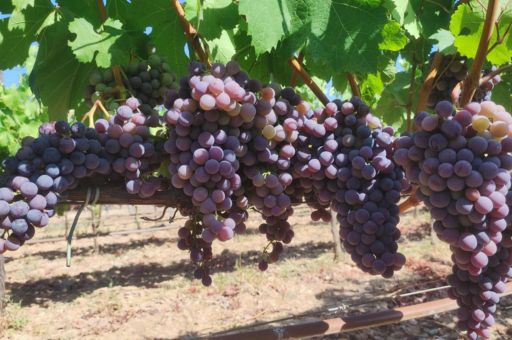In recent weeks, three important developments have been resolved for the wine sector in the Balearic Islands. One of them is the allocation of new planting authorisations this year, allowing for the cultivation of 16.29 additional hectares of vineyards.
Fernando Fernández, the Director General of Agriculture, Livestock, and Rural Development, stated: “These decisions represent a significant boost for the wine sector to continue developing an activity that is already well established in the archipelago.” He also emphasised
that the Ministry “works closely with the sector to ensure the profitability of farms, which produce high-quality products.”
TDB keeps you informed. Follow us on: Facebook, Twitter and Instagram
The Wine Sector of the Balearic Islands Strengthens its Outlook for Production Expansion and Investment Capacity
The Balearic Islands have consolidated their outlook for production expansion and investment capacity in the wine sector. In recent weeks, the Agriculture and Rural Development Commission (comprising the Ministry of Agriculture, Fisheries and Natural Environment, and the autonomous communities) has resolved three major issues. The region will receive new vineyard planting authorisations for an additional 16.29 hectares. Furthermore, €7.5 million in investments have been approved for modernising wineries, along with restructuring and conversion funds covering over 200 hectares of vineyards.
The planting authorisation procedure is an annual process managed by the Ministry of Agriculture, Fisheries and Food, following EU regulations. It only permits an annual growth of up to 0.1% of the total national vineyard area, ensuring orderly expansion that aligns with consumer demand. New plantings can only be made with specific authorisations granted through three mechanisms: new plantings, replantings of uprooted vineyards, or conversion of old rights.
In the Balearic Islands, the new area will be distributed between the Denominación de Origen Protegida (DOP) Binissalem, DOP Pla i Llevant, and the Indicaciones Geográficas Protegidas (IGP). Of the 16.29 authorised hectares, 11 will go to the DOPs and 5.29 to the IGPs. Fernández highlighted that “through this mechanism alone, the archipelago has increased its vineyard area by 100 hectares in the last five years.” Beneficiaries of the new authorisations have three years to implement them.
Fernández explained that, unlike other DOP regions in Spain, such as Rioja or Ribera del Duero—which have virtually halted new authorisations—the Balearic Islands still have room for orderly growth. “The allocation criteria protect the sector’s social and professional model,” he said. Applications are scored based on strict criteria that prioritise:
- First-time young winemakers,
- Young professionals seeking to expand to viable farm sizes,
- Medium-sized farms (4–8 hectares),
- Small farms (up to 4 hectares).
The 16.29 hectares authorised for the Balearic Islands exceed those allocated to Aragón (13), Navarra (8), La Rioja (8), and Galicia (7). Three hectares will go to new young winemakers, and 14 out of 17 applications were approved.
Another key development is the resolution of the Winery Modernisation Investment line, also part of the Wine Sector Instrument and distributed annually. Autonomous communities evaluate and score applications, while the Ministry distributes the funds. According to Fernández, “the results for the 2025 call have been highly satisfactory.” Eight winery projects were approved, with total planned investments of €7,009,093.61 and €2,001,461.49 allocated for the first year, representing a 38% subsidy rate. This means the Balearic Islands receive 2.75% of national funds, a figure Fernández says “surpasses what some larger wine-producing regions receive.” Except for one large-scale investment, the rest are moderate or small modernisation projects.
The restructuring and conversion fund for vineyards was also allocated. The regional government submitted 35 eligible projects totalling over €589,000. Ultimately, €336,570 was granted. Due to scoring-based distribution, some lower-ranked projects did not receive funding.
Fernández criticised the 2012 allocation criteria, noting that “some regions meet 100% of their needs, while others, like the Balearic Islands, only reach 50%.” He pointed out that “since 2020, we have been demanding a thorough revision of the criteria.” Two reform proposals have been submitted, and growing support from other regions has been secured. As a result, the Director General of Productions and Markets has committed to forming a working group in September to redefine the criteria for the next distribution.
Fernández emphasised the importance of vineyard restructuring for adapting to climate change. “Rather than just maximising productivity, we’ve submitted a coherent proposal including support for traditional bush training—better suited to our semi-arid climate—reduced planting density to limit competition for water, and conversion to local or better-adapted grape varieties.”
